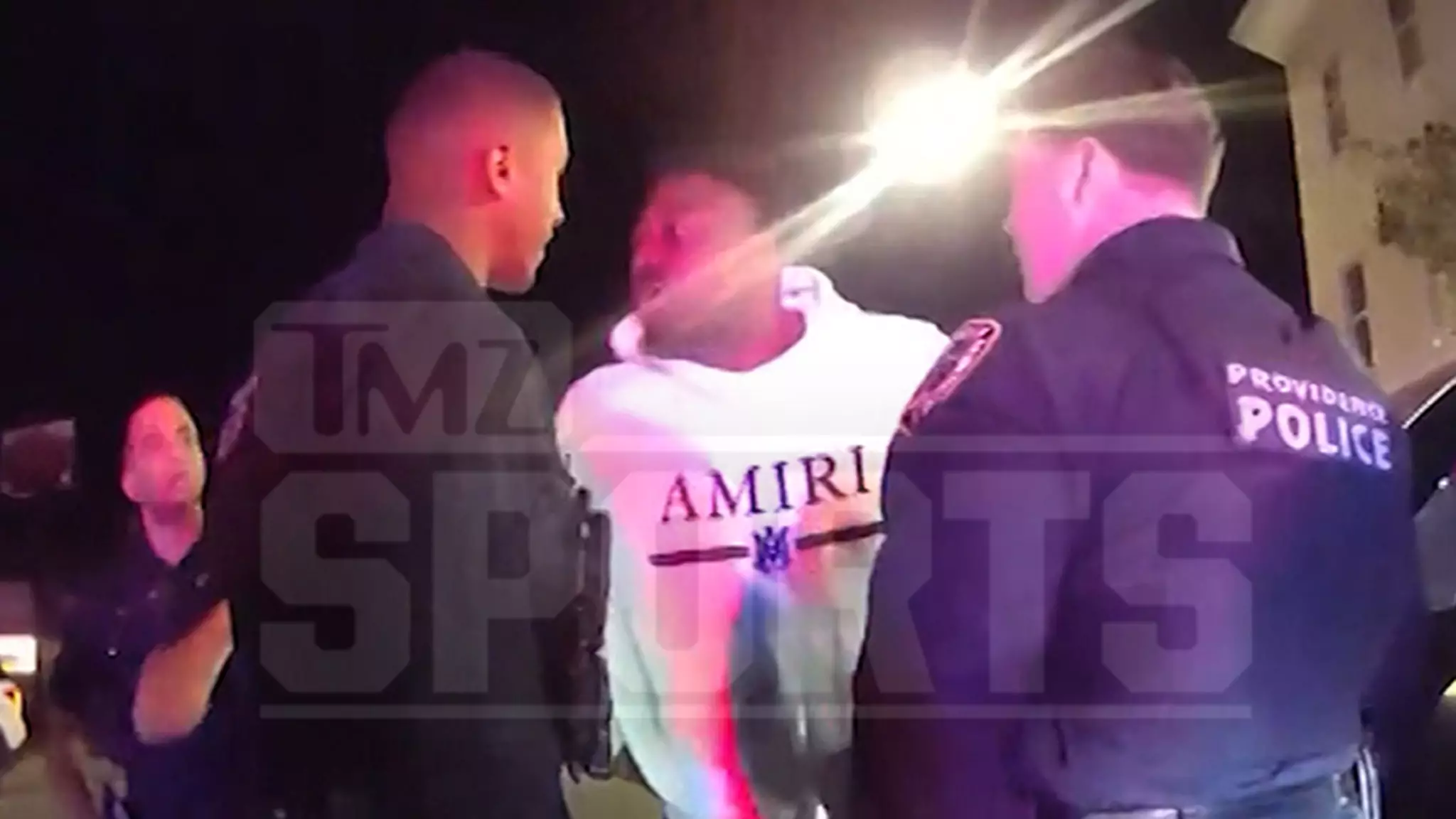In a recent episode that has sparked a wave of commentary across social media and news outlets, Christian Barmore, a defensive tackle for the New England Patriots, publicly chastised the Providence Police Department (PPD) following a traffic stop that he described as “unprofessional” and imbued with racism. As the narrative unfolded through Barmore’s own words and subsequent police body camera footage, a complex interplay of perceptions and realities emerged, which calls into question the full nature of the encounter.
The Initial Claims and Reactions
Barmore, who has previously found success as a second-round draft pick out of the University of Alabama, vented his frustrations on X (formerly Twitter) just after the incident, asserting that he was subjected to overt racism during the stop. His assertion has elicited substantial public dialogue, particularly given the high stakes associated with discussions around race, policing, and professional athletes. However, what followed was the release of body camera footage by the Providence Police, which appears to contradict some of Barmore’s assertions.
In the footage, we see Barmore’s Jeep Grand Cherokee already stationary on the side of a road when officers approach. His demeanor, characterized by a mix of defiance and irritation, sets the stage for a confrontation that quickly escalates. Barmore’s insistence that he had done nothing wrong and his immediate pushback against the officers raised questions about both his understanding of the situation and the officers’ intentions.
During the interaction captured in the footage, Barmore questioned the reason for the stop, claiming innocence over any wrongdoing. The officers revealed that the vehicle was unregistered and proceeded with their protocol, which included the towing of the vehicle. Barmore’s response, however, showcased an evident combative spirit as he insisted, “Y’all not taking my car,” reflecting a level of hostility that appeared to cloud the procedural nature of the police’s actions.
The dialogue escalated further, illustrating the tension inherent in many traffic stops — particularly for individuals who feel they are unjustly targeted. Barmore’s dismissive references to the officers’ perceived authority and his insistence on remaining in his vehicle suggested a broader frustration that can often arise in these scenarios. The situation quickly devolved into a tug-of-war over authority, where the interactions underscore a sensitive dynamic between law enforcement and civilians, particularly when race enters into the equation.
The release of body camera footage adds an essential layer to the analysis of the event. While Barmore’s reaction and accusations of racism must be taken seriously given the history of racial profiling and discrimination in policing, the evidence presented by the officers showcases a different narrative. Body-worn cameras, which serve to document events in real time, often bring clarity to contested scenarios.
In this case, as the video unfolds, it becomes evident that the officers were acting within the legal framework governing vehicle registration. The discovery of marijuana in the vehicle adds another layer of complexity to the situation, as it implies additional reasons for the officers’ keen attention during the stop.
Broad Implications
This incident illuminates the intricate relationship between race, authority, and public perception in contemporary law enforcement. Barmore’s claims of racism cannot be dismissed outright; rather, they must be examined critically alongside the realities of the encounter. Both sides represent valid perspectives, albeit through their respective lenses of experience.
Barmore’s feelings of aggression toward the police may stem from a history — personal or cultural — that influences how he perceives law enforcement encounters. Conversely, the actions of the police reflect the systemic laws and regulations they are mandated to enforce. The juxtaposition of these experiences underscores the importance of context in understanding both the nature of this individual incident and the broader societal implications of race relations in policing.
As public discourse surrounding race and policing evolves, incidents such as the one involving Christian Barmore cannot be viewed in isolation. They push us toward a necessary examination of the structures that govern law enforcement, the experiences of individuals of color, and the mechanisms by which we address grievances. In our search for justice and equity, it remains essential to foster dialogues that honor both the emotional truths of civilians and the procedural realities of law enforcement, ensuring that engagements between the two are approached with care, understanding, and mutual respect.

Leave a Reply